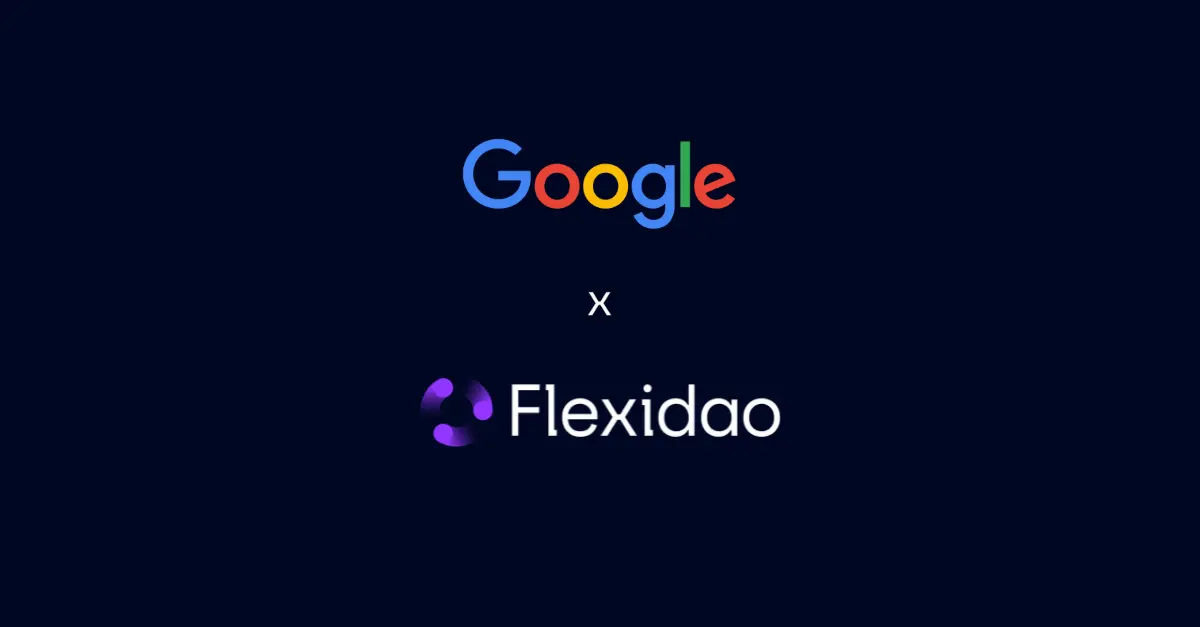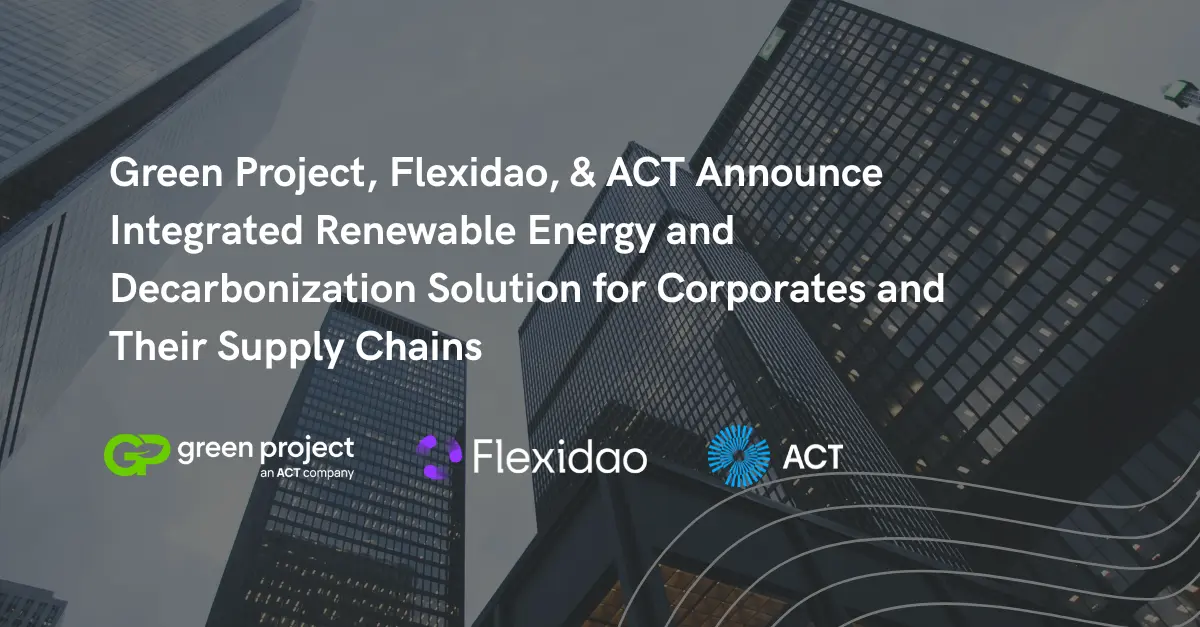24/7 Carbon-Free Energy: Meaning, Importance & Characteristics
24/7 Carbon-Free Energy: Meaning, Importance & Characteristics
Discover what 24/7 carbon-free energy means and how Flexidao's platform supports this transition.
Corporate clean electricity procurement is changing. Companies are adding stronger climate commitments to their agendas, leading to the development of new energy procurement strategies that maximize decarbonization impact. One of the principal strategies being explored by some corporate energy buyers as an advanced clean energy procurement approach is 24/7 Carbon-free Energy (CFE).
24/7 CFE has already been adopted by climate leaders such as Google, Iron Mountain, Mercedes-Benz, and Microsoft, while international energy suppliers, such as Engie, Vattenfall, AES, Quinbrook, etc offer 24/7 CFE tariffs.
In this article, we’ll answer the question “What is 24/7 carbon-free energy?”, and explore some of the infrastructure needed so corporate energy buyers are able to adopt this new procurement approach.
24/7 CFE: Definition and Characteristics
The United Nations 24/7 Carbon-Free Energy Compact defines 24/7 CFE as:
“24/7 CFE means that every kilowatt-hour of electricity consumption is met with carbon-free electricity sources, every hour of every day, everywhere. It’s both the end state of a fully decarbonized electricity system, and a transformative approach to energy procurement, supply, and policy design that is critical to accelerating its arrival.”
Princeton University's ZERO LAB define it as:
“24/7 carbon-free electricity procurement is to match a buyer’s electricity demand, hour-by-hour, 24/7, with corresponding clean electricity generation from within the same electricity grid region as the buyer’s operations.”
For businesses adopting a 24/7 Carbon-free Electricity procurement strategy, it means calculating your CO2 emissions by considering the time and location of energy usage and production.
This enables you to work towards matching your electricity demand, hour-by-hour, with corresponding clean electricity generated on the same grid as your operations.
How does 24/7 CFE differ from the most widely used energy procurement practices?
Many businesses will assume the electricity they procure is already zero-carbon, as they can claim they are supplied by “100% Renewable Energy” following guidelines such as RE100. However,, this is a common misconception.
“100% Renewable Energy” claims rely on annual or volumetric compensation. Most guidelines used by businesses right now don’t consider the electricity grid's geographical limitations in transmission.
- Geographical correlation
When you have a 100% renewable energy strategy in place, you are most likely covering your load by signing contracts like PPAs or green tariffs or by purchasing unbundled Energy Attribute Certificates. These energy market products can have loose geographical boundaries - you could be buying electricity from renewable generation assets that inject electrons into a different grid from the one that powers your facilities; at times, the grid you’re connected to and the one that receives the electrons associated with your purchase are not connected. This mismatch represents a structural limitation that can limit your decarbonisation impact.
- Temporal correlation
Our electricity grids are also in constant flux. A combination of electrons generated from fossil fuels and carbon-free electricity sources like wind, hydro, or solar constantly pass through our wires at any given moment, and renewable electricity is not always in the mix.
This means that when you procure electricity on an annual basis, using a volumetric mindset, you are not accounting for these real-world fluctuations, and you are not matching your electricity usage with renewable electricity actually being generated on your local grid.
These limitations mean 100% renewable energy claims can still leave you reliant on fossil fuels during times and in places where renewable electricity is not being generated.
In simple terms, think about how an annual weather forecast across the whole of Europe would not represent the physical reality of what the skies are doing where you are in one specific location right now. In the same way, an annual procurement methodology is underpinned by low data granularity, which does not account for the time or place electricity has been produced. This means an annual data cannot represent the physical reality of any particular electricity grid at any given moment in time. Precise data about time and location allow energy buyers to ensure a stronger decarbonization impact in their energy procurement strategy, as they can match their consumption with production of renewable electricity on their local grid throughout the day.
As a result, 24/7 CFE requires energy buyers to adopt more refined, transparent, and ambitious procurement decisions based on a few key requirements. The impact of their decisions can drive more local demand for renewable energy projects on their grid and lower their market-based emissions.
Developing a 24/7 Carbon-Free Energy Strategy
Instead of replacing existing sustainability best practices, 24/7 CFE procurement aims to introduce additional KPIs and refine the existing ones. This requires a lot more granular data in order to monitor progress and identify gaps in procurement where you are currently relying on energy that is not carbon-free to supply your operations. Below, we look at some of the other infrastructure and requirements energy buyers interested in adopting a 24/7 CFE strategy should consider.
What Infrastructure is Needed to Make 24/7 Carbon-Free Energy (CFE) a Reality?
- Production site eligibility
To be eligible to be considered as 24/7 CFE procurement, production and consumption MUST occur in the same electricity grid. At the time of writing this, the standard considers the interconnected TSO/ISO regions as the accepted geographical boundaries. In the future, boundaries could become even more restrictive and go down to individual bidding zones or even transformer grids to specify the level of quality of 24/7 CFE (i.e. the closer the sink is to the source, the better the 24/7 CFE is).
A production asset is eligible only if it is recognized as a CFE source, meaning that its operational CO2 intensity (excluding its lifecycle assessment) equals 0 kgCO2eq/kWh. This includes but is not limited to, solar, wind, hydroelectric, nuclear, biomass, and battery storage.
- Time synchronicity certifications
24/7 CFE introduces the need for a revised certification scheme concerning the traditional EACs, called Granular Certificates (GCs) or T-EACs. GCs are, by nature, intrinsically linked to EACs and cannot exist without them. They are the natural evolution of the current EAC scheme and they provide additional information on the exact time of CFE production.
To claim a certain 24/7 CFE achievement, an energy buyer/supplier needs to demonstrate that it has purchased a volume of GCs/T-EACs (via PPA, green tariff, or unbundled OTC transactions) whose timestamps effectively match its consumption hourly pattern and which respect the eligibility criteria explained above.
- 3. Hourly CO2 emissions reporting
By knowing the location and the time of both production and consumption of electricity, it is possible to perform hourly CO2 emissions reporting, This process is based on the same concept of traditional reporting methodologies (calculation of GHG Scope 2 location-based and market-based emissions as explained in our introductory article), but using real hourly emissions factors instead of yearly and applying more strict eligibility criteria to GHG market-based emissions calculations addressing the deliverability of purchased GCs/T-EACs.
Hourly CO2 emissions reporting is not a threat to current Scope 2 sustainability reporting standards, but rather a complementary enhancement that aims to provide the most transparent and comprehensive analysis on the impact of electricity procurement.
The first key performance indicator for 24/7 CFE was proposed by Google: the so-called CFE Score, which “measures the degree to which each hour of our electricity consumption on a given regional grid is matched with CFE on an hourly basis”. This is calculated using both the CFE under contract by Google, as well as CFE coming from the overall grid mix. Other leading energy buyers might define their key performance indicators until no-profit organizations such as the United Nations 24/7 Carbon-Free Energy Compact collaboratively implement a standardized reporting framework.
Monitoring your 24/7 CFE targets with Flexidao
Flexidao offers a comprehensive solution for organizations to monitor their 24/7 carbon-free energy targets. Our platform is designed to help businesses access, aggregate and standardize the granular data necessary to evaluate their portfolio’s carbon performance in terms of hourly matching. This allows strategic insights, enabling businesses to adopt the most impactful energy procurement strategies like a 24/7 CFE approach.
How Can Flexidao Help?
- Take Advantage of Advanced Data Access Capabilities
Track electricity and emissions data up to hourly intervals for a detailed view of your portfolio's performance. Use this to monitor your advanced goals and identify the gaps where you are currently not getting supplied with carbon-free energy.
- Gain Comprehensive Oversight to Track your Goals
Simplify the complexity of granular carbon emissions KPIs, necessary for monitoring 24/7 progress. Our intuitive dashboards deliver clear insights, helping you communicate results and drive smarter decisions.
- Expert Guidance for Smarter Procurement Strategies
Get expert, ongoing advice to turn carbon emissions data into an actionable electricity emission reduction strategy. Our continuous insights help you sharpen oversight, drive impactful carbon reductions, and hit your sustainability targets faster and more efficiently.
Interested in developing your strategy alongside evolving regulations? Reach out to our experts today.


.webp)





